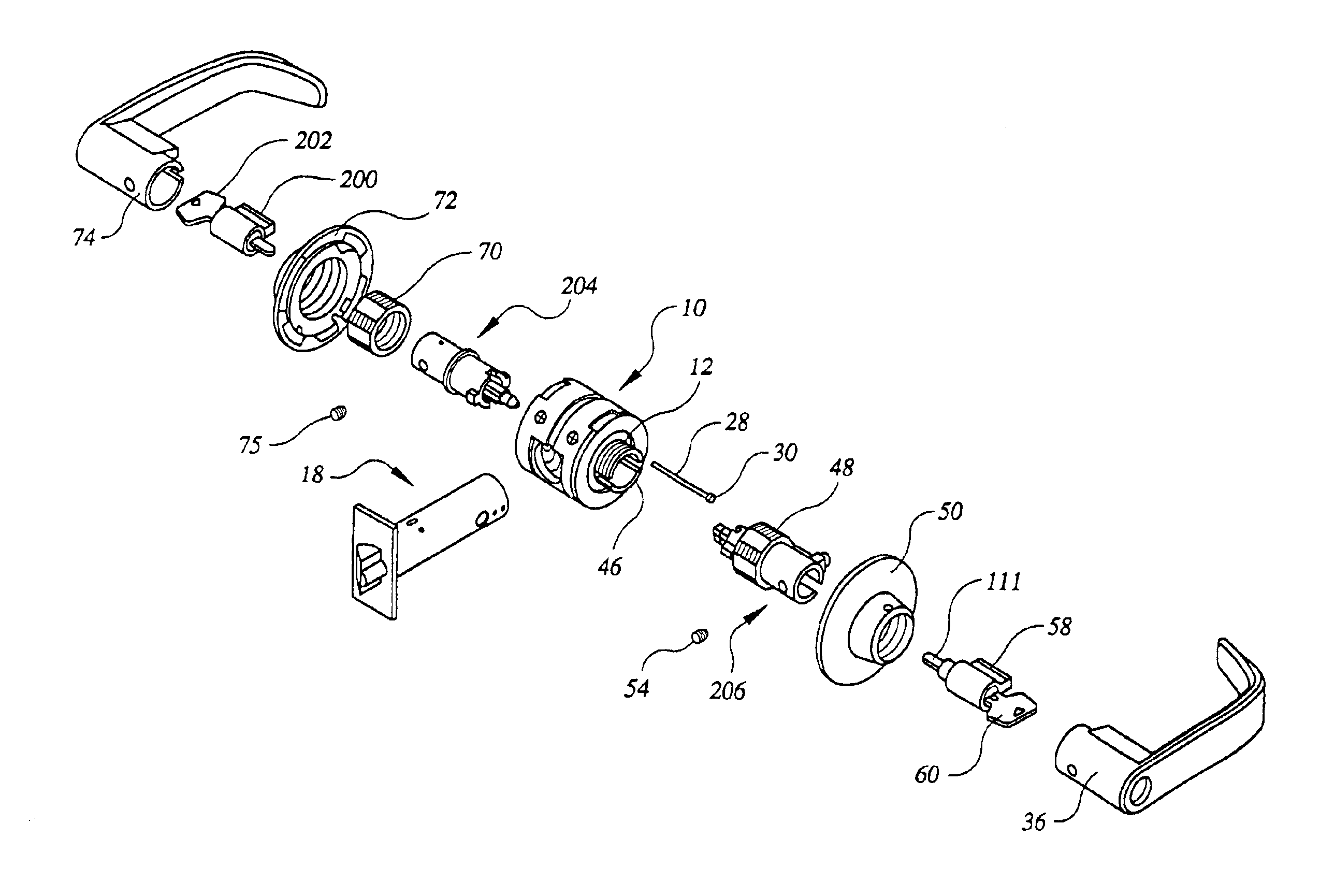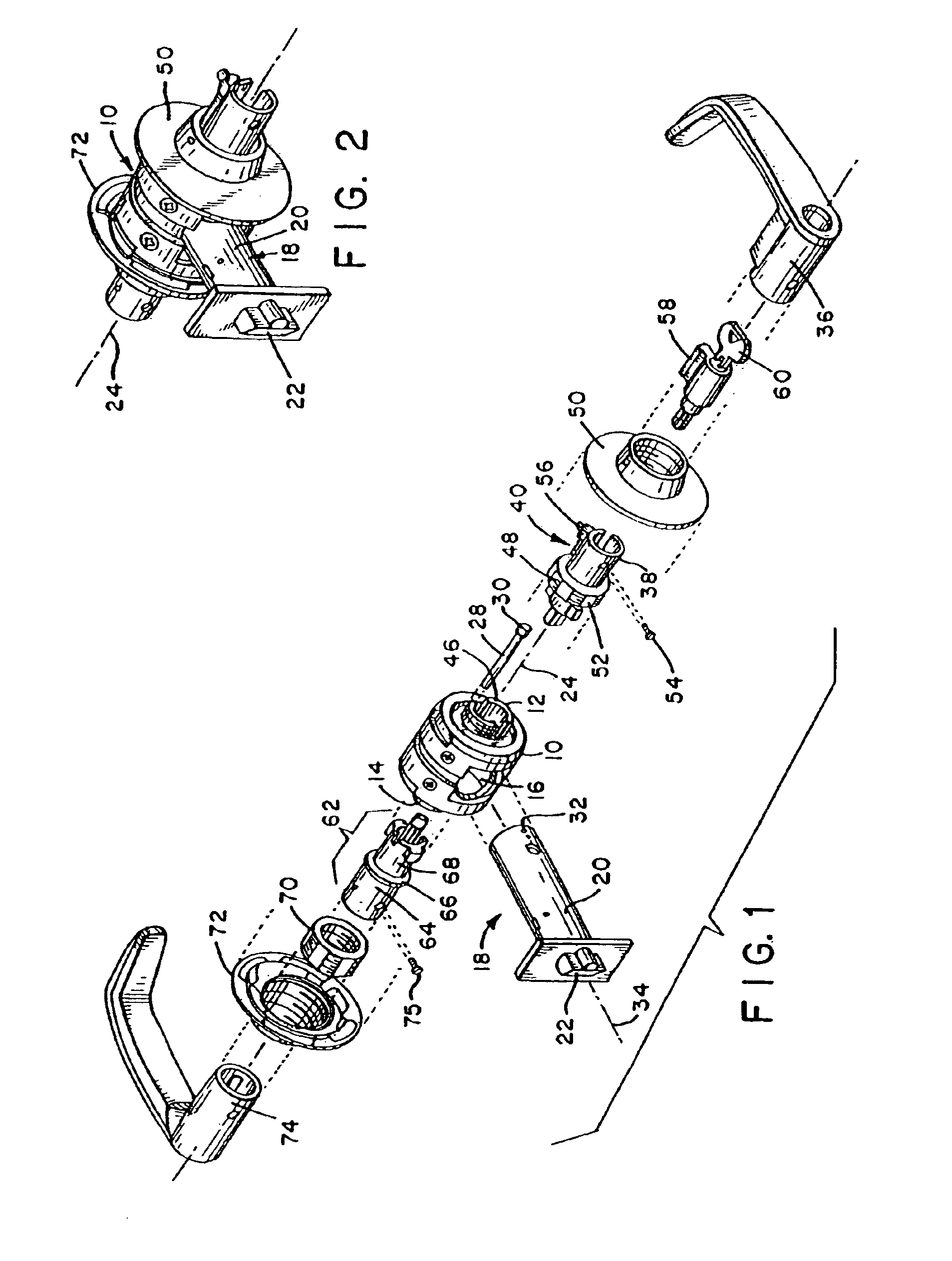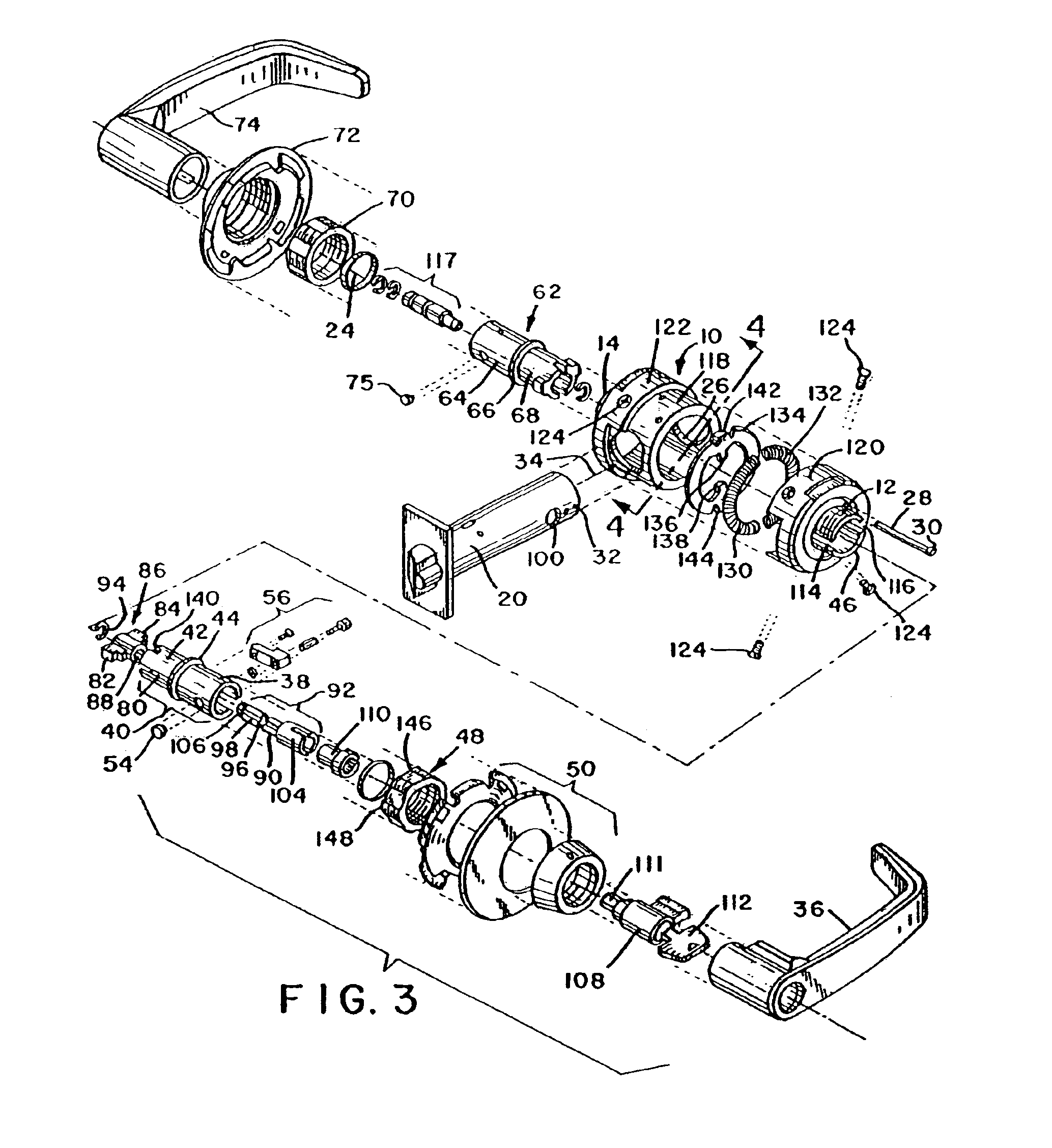Security classroom function lock mechanism
a function lock and classroom technology, applied in the field of high-quality cylindrical locks, can solve the problems of not allowing them to have access to the room (or any other locked room) from the outside, the inside cannot always be certain as to the locked state of the door, and the room that is securely locked before entry may become unlocked, so as to reduce the force on them
- Summary
- Abstract
- Description
- Claims
- Application Information
AI Technical Summary
Benefits of technology
Problems solved by technology
Method used
Image
Examples
Embodiment Construction
)
In describing the preferred embodiment of the present invention, reference will be made herein to FIGS. 1-10 of the drawings in which like numerals refer to like features of the invention. The embodiment of the lock shown in FIGS. 1-7, which does not include the security classroom lock mechanism, will be described first to provide a basis for better understanding the operation of the lock when equipped with the security classroom lock mechanism.
Referring to FIGS. 1 and 2, the present invention includes a lock core 10 having two externally threaded bearings 12, 14 on opposite sides. The lock core 10 includes a front opening 16 that receives a latch mechanism 18 including a latch bolt frame 20 formed in the shape of a tube. The latch mechanism 18 includes a latch bolt 22 and a retractor mechanism 102 (see FIGS. 6 and 7) located within the latch bolt frame 20 for retracting the latch bolt.
The tube comprising the latch bolt frame 20 extends through opening 16 in the front of the lock c...
PUM
 Login to View More
Login to View More Abstract
Description
Claims
Application Information
 Login to View More
Login to View More - R&D
- Intellectual Property
- Life Sciences
- Materials
- Tech Scout
- Unparalleled Data Quality
- Higher Quality Content
- 60% Fewer Hallucinations
Browse by: Latest US Patents, China's latest patents, Technical Efficacy Thesaurus, Application Domain, Technology Topic, Popular Technical Reports.
© 2025 PatSnap. All rights reserved.Legal|Privacy policy|Modern Slavery Act Transparency Statement|Sitemap|About US| Contact US: help@patsnap.com



